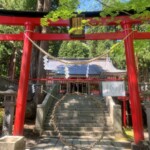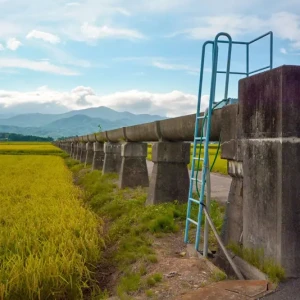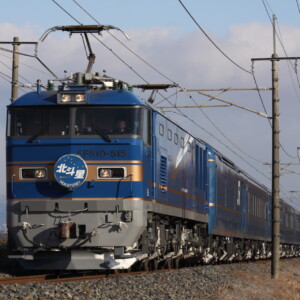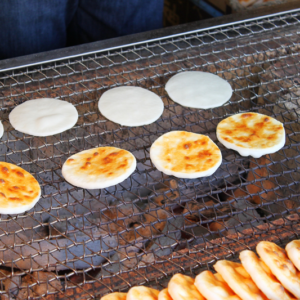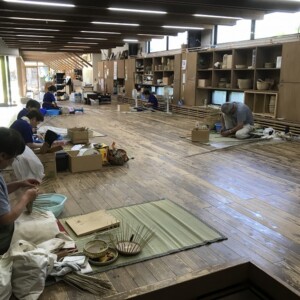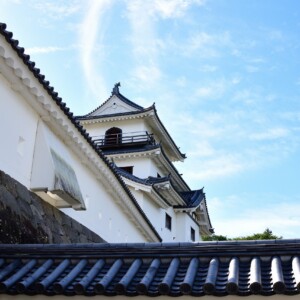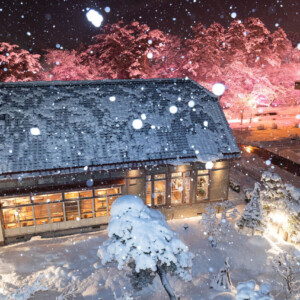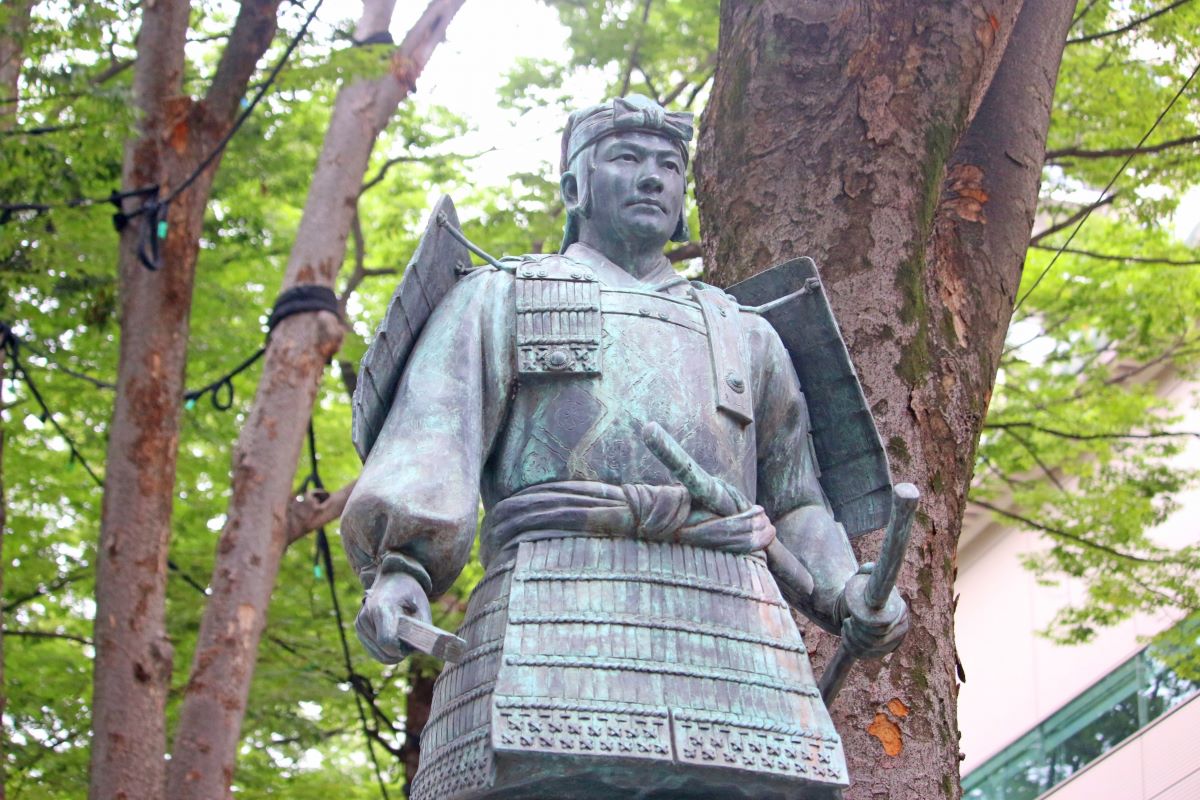
[Series ③: The role of the previous nine years and the role of the second three years] Abe's army, which boasts unparalleled strength, is forced into a predicament by Minamoto no Yoriyoshi
table of contents
- 1 What are the roles of the previous nine years and the latter three years (Zenkunen no Eki and Gosannen no Eki)?
- 2 Abe Tomitada sided with Yoritoki and died in battle.
- 3 Minamoto no Yoriyoshi, who was ordered to hunt down Sadato Abe, suffers a crushing defeat.
- 4 The prosperous Abe clan and the sad Genji clan
- 5 Mr. Kiyohara's participation in the war changed the course of the previous nine years.
- 6 summary
- 7 Serialization: The role of the first nine years, the role of the second three years
After the Akutogawa Incident in February 1056, Minamoto no Yoriyoshi and Abe Yoritoki once again found themselves at war, but the battle continued with ups and downs. The war continues.
Therefore, Yoriyoshi recruited Abeno Tomitada of Emishi, who was in present-day Aomori Prefecture, north of Mutsu's Okuroku District (Iwate Prefecture), to his side and attempted to attack Abe's army in a pincer attack. will do.
Yoritoki was attacked and died while trying to persuade Tomitada, but the Abe army led by his successor, Sadato, became even stronger, and Yoriyoshi was gradually pushed into a corner.
What are the roles of the previous nine years and the latter three years (Zenkunen no Eki and Gosannen no Eki)?
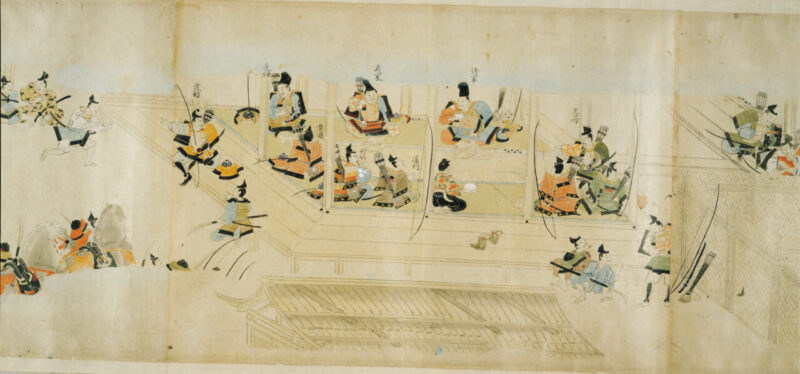
It was fought in Tohoku (Iwate Prefecture and Akita Prefecture) from 1051 (Eisho 6) to 1062 (Kohei 5) and from 1083 (Eiho 3) to 1087 (Kanji 1) at the end of the Heian period. There are two campaigns.
The War of the Nine Years was a campaign in which the Minamoto clan, dispatched by the imperial court, quelled the rebellion of the Abe clan, which was growing in power in Mutsu (Iwate Prefecture), with the help of the Kiyohara clan.
After that, an internal conflict arose in the Kiyohara clan, which had strengthened its control from Mutsu to Dewa (Akita prefecture), and the dispute over the family headship developed into a battle during the War of the Third Year, and the Minamoto clan was also here. is deeply involved.
These two campaigns led to the establishment of the Oshu Fujiwara clan in Hiraizumi, Iwate Prefecture, and the bond between the Minamoto clan and the samurai of eastern Japan deepened, leading to the establishment of the Kamakura shogunate under Minamoto no Yoritomo.
Abe Tomitada sided with Yoritoki and died in battle.
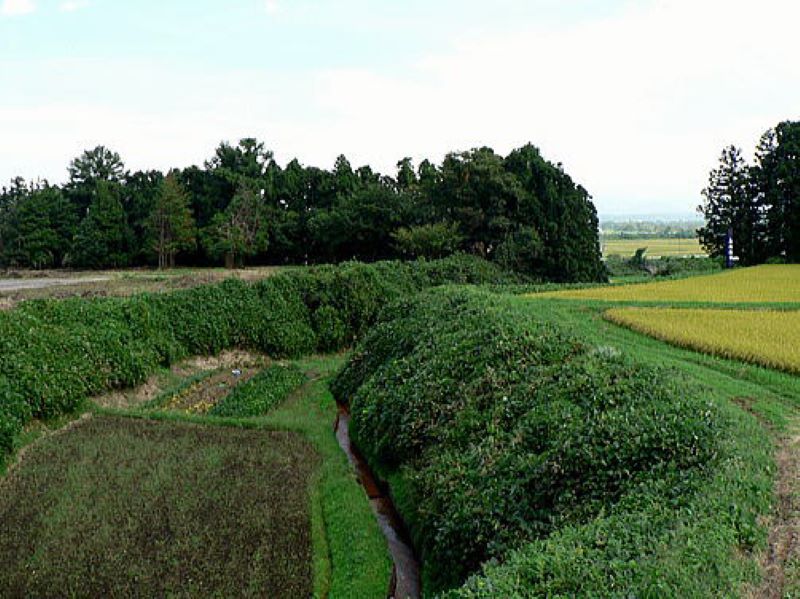
Yoriyoshi planned to recruit Tomitada, who was a prisoner of a large power in the north of the six districts of the Okuni (Ezo clan that followed the Kokufu side), to his side, and launch a pincer attack on Yoritoki from the north and south, and to bring Tomitada into his side. succeeded.
When Yoritoki learned of this, he headed north to persuade Tomitada, but on the way he was attacked by Tomitada and seriously injured. He died in Kanegasaki Town).
However, Yoritoki's death strengthened the unity of the Abe clan's followers, and his successors, Sadato and Muneto, encouraged each other to fight, and the War of the previous nine years turned into a long battle.
Chokai-no-zaku Ruins<Information>
- Facility name: Chokai-no-zaku ruins
- Location: Chokai, Daito-cho, Ichinoseki City, Iwate Prefecture
Google Map
Minamoto no Yoriyoshi, who was ordered to hunt down Sadato Abe, suffers a crushing defeat.
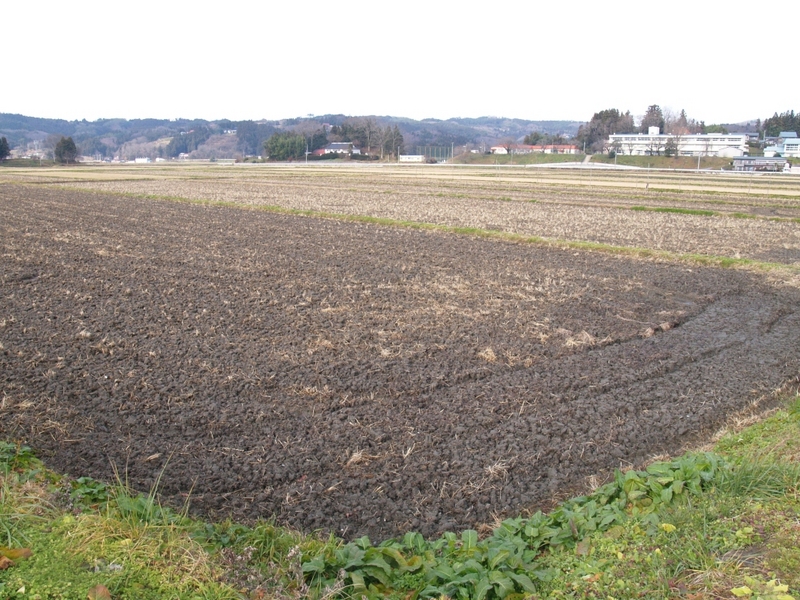
In September 1057, an order was issued by the Imperial Court to hunt down Sadatoto Abe, and in November Yoriyoshi marched into the Okuroku District with 2,500 (or 2,000) soldiers from the Kokufu, and with 4,000 Abe's troops, attacked the Yellow Sea (Kinomi: Ichinoseki City, Iwate Prefecture). Fujisawa Town).
It is said that the Kokufu army was poorly prepared with provisions and soldiers were exhausted due to the cold, and they were defeated by Abe's army, who took advantage of their geographical advantage to attack.
It is thought that Yoriyoshi went to battle with a smaller army than Abe's army because he was counting on the Tomitada forces in the north, but later generations have suggested that he may have misjudged the timing of the Tomitada forces' arrival, or that he may have been in a hurry to achieve success. It has been pointed out.
Yoriyoshi lost several hundred soldiers and many of his veteran vassals and fled, and although Yoriyoshi himself was almost killed in the attack, he narrowly returned home thanks to the efforts of his eldest son, Minamoto no Yoshiie.
In this battle, Yoriyoshi's military strength was greatly reduced, and the Abe clan came to effectively control the southern region of the Okuroku-gun region.
Hachimantaro Yoshiie's performance as a lion!
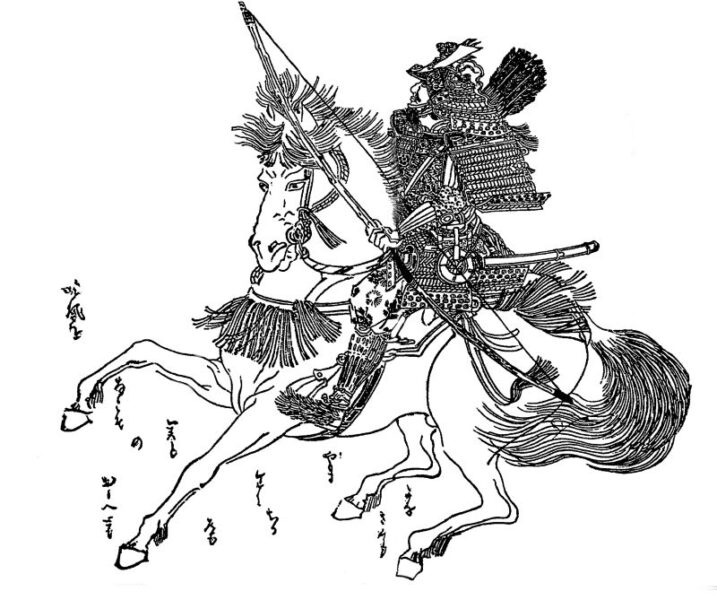
Yoriyoshi's eldest son, Yoshiie, was also called ``Hachimantaro'' because he celebrated his New Year's wedding at Iwashimizu Hachimangu Shrine in Yamashiro (Kyoto), and his military prowess was said to have been passed down to posterity as ``the strongest of the Genji clan.'' It is being
By the way , Yoriyoshi solicited Iwashimizu Hachimangu Shrine to Kawachi and founded Tsuboi Hachimangu Shrine, and also solicited Kamakura as a base in the eastern part of Japan and built Tsurugaoka Hachimangu Shrine, which later became the foundation of the Kamakura Shogunate. have become.
In the Battle of the Yellow Sea, where the National Army was completely destroyed, he is said to have fought with a lion's might to protect his father, Yoriyoshi, and his bow was so accurate and powerful that it was said that ``if you shoot from horseback, there is no arrow that will miss.'' It is.
It is written in the ``Mutsuwaki'' that his great success with eight faces and six arms was ``like a god.''
Tsuboi Hachimangu Shrine<Information>
- Facility name: Tsuboi Hachimangu Shrine (guardian deity of the Kawachi Genji clan)
- Location: 605-2 Tsuboi, Habikino City, Osaka Prefecture
Google Map
The prosperous Abe clan and the sad Genji clan
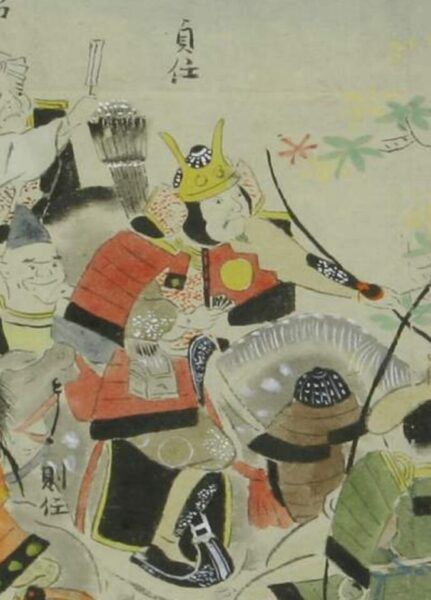
Yoriyoshi's army, whose military strength had been greatly reduced due to the crushing defeat, took time to recover, but the Abe clan gained momentum and even dispatched Fujiwara Tsunekiyo to areas that had previously paid taxes to the Kokufu to collect taxes. .
Yoriyoshi was forced into such a predicament that he could not gather troops only around the Kokufu, and had to reach out to the Kanto and Tokai regions to increase his military strength.
Eventually, Yoriyoshi's term as Mutsu no kami expired, and Tsuneshige Takashina was appointed from the capital in his place, but there was no one to follow the court nobles who came from the capital, and Tsuneshige was dismissed and Yoriyoshi took over. He became Mutsu no kami again.
Toyotakan Ruins<Information>
- Facility name: Toyodakan ruins (Fujiwara Keiseikan ruins, birthplace of Fujiwara Kiyohira)
- Location: 023-1101 Shimonawashirozawa, Esashi Iwayado, Oshu City, Iwate Prefecture
Google Map
Mr. Kiyohara's participation in the war changed the course of the previous nine years.
About 30 years ago, Yoriyoshi feared that the Minamoto clan would lose its authority in the eastern provinces, which had been gained by his father Minamoto no Yoronobu after quelling the Taira no Tadatsune Rebellion, so he decided to wait and see. He tries to win over the prisoners who are doing so.
The person Yoriyoshi targeted was the Kiyohara clan in Dewa, whose influence was as strong as that of the Abe clan.
Yoriyoshi succeeded in persuading the Kiyohara clan by asking Mitsuyori Kiyohara to participate in the war by giving gifts and paying homage as if he were a vassal.
summary
Minamoto no Yoriyoshi was almost driven to death by the strength of the Abe clan, but his eldest son Yoshiie made a spectacular debut as a warrior and was reappointed Mutsu no kami, whose term had expired, allowing him to revive his forces and the Kokufu army. I will try.
Then, along with 10,000 Kiyohara troops on his side, he challenges Mr. Abe to a decisive battle (continued from the previous nine-year war and the second three-year war ④).









![[Series ⑤: The role of the previous nine years and the role of the second three years] 20 years after the role of the previous nine years, signs of war once again spreading to Ou Minamoto Yoshiie 2](https://jp.neft.asia/wp-content/uploads/2023/11/43170603cd506225e1e986eec406b569-150x150.jpg)
![[Series ④: The role of the previous nine years and the role of the second three years] Mr. Kiyohara's participation in the war completely changed the flow of the role of the previous nine years 1000310_m](https://jp.neft.asia/wp-content/uploads/2023/11/1000310_m-150x150.jpg)
![[Series ②: The role of the previous nine years and the role of the second three years] The role of the previous nine years is from the truce to the battle again, and the Kokufu army is struggling Taga Castle Ruins](https://jp.neft.asia/wp-content/uploads/2023/11/a0b8b1213124e7a13c7308fa81e053a2-150x150.jpg)
![[Series 1: The role of the previous nine years and the role of the later three years] Why did the Ou War at the end of the Heian period take place? Shiba Castle Ancient Park](https://jp.neft.asia/wp-content/uploads/2023/11/6e4e9113cd864c9d5892db200df1ec1c-150x150.jpg)
![[Series ⑥: The role of the first nine years and the role of the second three years] From the internal conflict in the Kiyohara clan to the battle for the family succession, the role of the third year after it was considered a private war Three years later 1](https://jp.neft.asia/wp-content/uploads/2023/12/c0edc0a05afd06375d9f91bd4b7c9472-150x150.jpg)
![[Series ⑦: The first nine years of roles and the second three years of roles] The bond between the Genji and Togoku warriors, and the beginning of 100 years of prosperity of the Oshu Fujiwara clan Mokoshiji Garden Oizumi Pond in Winter](https://jp.neft.asia/wp-content/uploads/2023/12/75325853c50b8afdb1ab8cca28718b3a-150x150.jpg)
![Hiyama Ando clan, ruled Akita during the Sengoku period and based in Noshiro [Akita Prefecture] Akita Fan](https://jp.neft.asia/wp-content/uploads/2025/03/0275d341934f847be3452ea4662d9a4e-150x150.jpg)
